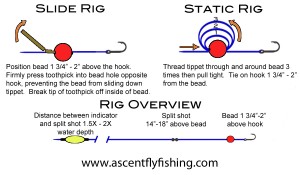The Evolution of the Egg
Since time out of mind in rivers around the globe, trout have spawned, laying their eggs in ancient gravels, only to have their efforts and familial dreams devoured by other fish. In the constantly moving world of trout, where currents continually push and pull and food actively seeks to evade capture, the opportunity to eat eggs is among the lowest hanging fruit for hungry fish.
Fast forward many years to find our tweed-jacketed ancestor with cane pole in hand, sight casting to trout on some heath-lined Scottish stream. His fly line was woven horse hair, the flies a rough concoction of feather and fur, and the hooks large enough to make the modern midge fisherman faint from fright. With these primitive tools, fishing could be a grind, and the term “Catch & Release” wouldn’t become part of the fly angler’s vocabulary for another 250 years.
Now enter the modern day fly fisher. Armed with fly rods made from space-age carbon fiber, precision-milled aluminum reels, and arsenals of delicately tied flies, we are the stuff of trout nightmares. While we still depend heavily on fur, feather, dubbing, and thread for the flies we tie, synthetic materials made from plastics, glass, and resins have made our patterns more durable and realistic. One of the newest and best advances in the evolution of fly fishing is the creation of Peg-Eggs.
Crafted from plastics and resins, almost identical in weight and buoyancy to the natural eggs and hand painted to perfection, the peg-egg is the undisputed king of egg patterns.
What makes peg-eggs so effective has more to do with their unique rig than anything else. As trout feed on eggs in nature, they will break cover, move into the current, snatch an egg drifting along the streambed, and then turn back toward their holding area to await more food. While the peg-egg can be rigged several different ways as seen in the graphic below, the point of key importance is that the egg is secured 1 3/4″-2″ above the hook.
The purpose of positioning the egg above the hook is to take advantage of – and use to our favor – the trout’s natural feeding behavior. After a trout picks up the drifting peg-egg and moves to return to its holding area, the bead slides on the tippet, drawing the hook into the corner of the trout’s mouth. The resulting hookup is more humane, secure, and has the lowest fish mortality rate of any fly fishing technique. The future is here, melding science and innovation. For unmatched action during the spawn, tie up a peg-egg and hold on!
By: Peter Stitcher
© River Oracle LLC.

